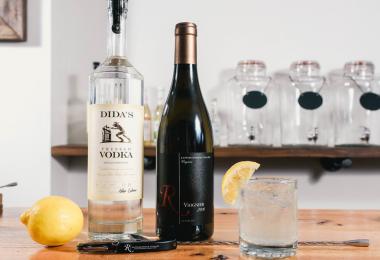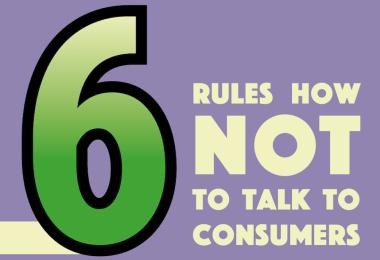For most wine producers and distributors, marketing has traditionally involved public relations (PR) and not much else. Limited volumes and small margins have meant that big-budget advertising is often not an option for them. In Europe, in particular, communication has in any case often not been thought of as part of a producer’s job.
PR specialists who have built up and nurtured relationships with key opinion formers have inevitably benefitted from this on various levels. Simply sending out samples and press releases to writers is, as many have discovered, often a fruitless activity. The most successful critics can receive hundreds of samples per week and only have space to write about a tiny fraction of these. A call from a PR person they know and like might make all the difference between a wine going unnoticed and appearing in a major publication. Better still, the PR might be in sufficiently regular contact with a top writer to know when they are likely to be focusing on particular regions and styles. The relationship may work in both directions. Most PRs will have stories of last-minute calls from journalists desperate for information or samples at apparently unfeasibly short notice. As Sue Pike, who ran Wines of Chile in the UK in the 1990s, wryly says, “When you’ve saved a writer’s professional life, it’s amazing how ready they are to take your call when there’s something you want them to do.”
Good relationships
Another UK professional who prefers not to be named, makes a similar point. “Like most of our competitors, we sometimes find ourselves looking at events to which we’ve invited all the right people – and only received a scarily small number of acceptances. So we call in favours from high profile writers who turn up, if only briefly. We know they’ll almost certainly not write anything about it, but the client won’t mind; they’ll have shaken their hand and seen them taste at least one of their wines. And we make sure the photographer gets a shot or two of them doing so.”
Clients can themselves be challenging. Pike remembers the “awkward” discussions she had with clients over the journalists they thought were important and the ones who she knew really mattered. “So they were insisting on us inviting a person who had basically retired years ago and saying that there was no room for one who had a really popular newspaper column.”
If this made Pike’s life difficult 20 years ago, the decision of whom to target is far trickier today, following the arrival of an array of sometimes self-important bloggers, and the disappearance of newspaper columns. Australian-born, US-based Rebecca Hopkins, who handles media relations for Michael Mondavi’s Folio Fine Wine Partners, says managing producers’ expectations is a constant challenge. “They often imagine that there are long lists of writers in every city simply waiting to meet them. In fact, in even the biggest cities there is often only one or two worth talking to, and very little chance of getting hold of them unless you have something very special to show or tell them.”
For Hopkins, the role of the PR specialist is to be a good matchmaker. “One of the keys to getting it right is to understand what each writer is looking for. There’s no point, for example, in sending Ray Isle of Food & Wine magazine a $25.00 bottle, because he’ll never cover wines selling for over $15.00. You also have people who only write about particular kinds of wines, like Allen Meadows of Burghound. You talk to him about Burgundy, not about Italian wine.” Some writers want details of precisely how a wine is made and the type of rootstock and clones, while others are far more interested to learn about the kinds of dishes the winery owner’s mother likes to cook.
Cultures differ too. Hopkins believes that writers in Australia often know more about winemaking than many of their US counterparts. Dorli Muhr, who launched her Wine & Partners business in Vienna in 1991, has a lot of experience of the dangers of ignoring cultural differences. “I remember we hosted a small dinner for 10 people in Austria, Germany, Belgium and France for Errazuriz. We asked all the journalists to arrive on time and in Germany and Austria they all came within 10 to 15 minutes of when they had been asked. In Brussels they were 15 minutes early, and in Paris, only two came at all – and they were both 45 minutes late.” Timing was also an issue in Asia. A presentation that took 90 minutes in Tokyo lasted four hours in Shanghai because, instead of asking questions, so many of the sommeliers made speeches to show off their knowledge.
Sometimes, Muhr continued, the differences can be very surprising. “When Robert Mondavi celebrated his 90th birthday, I was responsible for his company’s public relations across Europe, apart from the UK. We had a meeting with representatives for all these countries and the US team showed us all a great picture of Bob Mondavi they wanted to send out to the press. We all gasped when we saw it and said ‘you really can’t use it like that’. The problem was the black frame around the picture which we knew would make Europeans think he had died. The Americans were really surprised. They had no idea people would see it that way.”
Bordeaux-based Lorraine Carrigan does not generally favour offering lavish lunches at the tastings she organises, but says that culinary expectations are another area where the nationality of the writer can be important. “Some French critics historically based their attendance at any event on the prestige of the chef who would be catering for it. US writers, by contrast now tend to insist on paying their own way for everything, including flights and accommodation.”
Whilst, as French PRs acknowledge, polite Gallic gourmands could usually be relied upon to write thank you notes for their hospitality in the form of positive editorial coverage, Carrigan, like many other PRs, find that the self-funding Americans are often the most reliable media on whom to focus one’s attention. “The best tend to be the freelancers,” she says, “because you know they’ll have sold the story before they leave home – often to several different publications.”
Surprisingly, PRs for some very high-profile clients fail to update their database and continue to send material to old addresses. The real professionals, however, are keeping a careful eye on who is doing what.
Readership and reach
Where PRs used to – and often still do – justify their efforts by the size of a publication’s readership, the top PRs are now more interested in the quality of the readers. As one PR quietly said: “We can all guess how few people actually read some of the well-regarded but unaudited consumer magazines – compared to the numbers they claim – but those readers are some of the most valuable to us.”
“Our clients are all high-end,” says Muhr. “None of their wines are in supermarkets, so we don’t want to talk to everyone. To be a serious journalist, it’s not a question of numbers, it's the content. We watch what people do – how serious they are. I prefer serious bloggers and journalists, who have opinions and are critical.”
When it comes to assessing bloggers, PRs are increasingly sophisticated when it comes to assessing the size and quality of their audiences. Most of the professionals take at least passing note of free analytical tools like Klout, Kred and Traackr, which monitor the frequency with which social comments are shared by their followers.
Whatever the digital gadgetry on offer, however, nothing beats personal contact between a PR and an opinion former who know each other well. One way to build these relationships is for the PR professional to nurture new ones. “Sometimes,” Muhr says, “we see young journalists who have talent, so provided they clear focus and know how to taste, we help them to grow their knowledge.”
When talking about press trips – a traditional staple of any PR effort.
Carrigan likes to mix nationalities and professions, inviting both sommeliers and writers to the same event. Muhr shares this view, saying that the traditional model of putting together a group of, for example, British writers, simply leads to a single market getting a brief burst of very similar articles. For Muhr, it is far more fruitful to hand pick a writer and give them the chance to spend time with her client individually.
Press conferences, another well-worn tool, also get the thumbs down from Muhr. “They are always a big effort for everyone – and not just the organisers. You are trying to get 10 to 15 serious people to find the time in their busy day, and even when they are there, they have to wait to ask questions and to get the same answers as all of their competitors.”
Internal politics
Nicky Forrest of Phipps PR in the UK has a range of clients from the retailer, Sainsburyʼs to Krug to German Wines, Kenyan tea and Jersey Royal potatoes. She says that she loves working for generic organisations. “It is easier to talk about a category than a brand,” she says, with the proviso that collaborating with a group of clients rather than one can bring its own challenges. “I always say that with generics, politics take you in one direction while strategy takes you the other.” The battle between an individual producerʼs aspirations and those of an entire region is not unique to the wine industry.
Fortunately the German Wine Institute is “brilliant politically,” she says, giving the example of their readiness to embrace new ideas such as inviting the ‘sensorial perception’ expert Martin Darting at a recent trade tasting to explore the ways in which professionals experience different wines. Forrest ruefully admits, however, that potatoes are easier to represent than wine. “They are less complex; they require less knowledge on the part of the journalists, and there is so much more we can do with them. Food is most countries’ biggest industry; it affects everyone, whilst wine is a niche product.”
Muhr recognises the ‘politics v strategy’ problem, but says that there can be similar difficulties when dealing with family-owned companies, for example. “We always spend a day with the client before we take them on, so that we can establish what they do – and what they want to achieve. Then we aim to talk to them at least once a week.” For Muhr, this approach makes the PR an internal part of the business. Often the client doesn’t recognise that they are sitting on a potential interesting story. “We’ve just been talking to a journalist about amphora, for example, and then a client says in passing that he’s been experimenting with making a sulphur-free wine, and we can put the two together.”
Communication between different parts of the client’s organisation is also critical.
Despite being based on the other side of the Atlantic, Carrigan says her Californian client Inglenook treats her as though her office was just along the corridor from theirs. For some companies, including surprisingly small ones however, communication with a PR, internal or external, is hampered by a lack of communication between other parts of the business. As a PR professional said of one of their more frustrating current clients: “When the sales and marketing teams don’t know what the winemaking team are doing, and when the marketing team launches a campaign without telling the salesmen, it’s hardly surprising that we’re left out of the loop.”
Which makes PR everybody’s business. Even when companies employ an external professional to do their communicating, there’s still lots of internal work to be done.
How to appear in the media
Fancy seeing yourself featured in your favourite wine magazine? While coverage is never guaranteed, here are some suggestions about how you can help your case:
1. Have professional photos done
It’s surprising, in this digital age, how many people still don’t have high resolution head shots ready. That’s one reason why you’ll often see the same faces recycled through the media – they’re the people who made an effort to get photos done.
Few outlets now have the budget to take photographs of everyone they interview, but everybody needs illustrations, so if you can offer quality pictures, most publications will accept them with thanks. Make sure the key people in your organisation – sales directors, winemakers and the family owners – have professional headshots at the ready. Don’t try using smartphone pictures, as they’re not publication quality.
When photographing your winery, remember that all fermenting tanks, barrels and concrete floors look alike, so these pictures are unlikely to be used.
2. Target your press releases
Sending a press release about something that’s unrelated to the outlet you’re sending it to marks you out as an amateur. For example, despite being published in Germany, Meininger’s Wine Business
International is an English language magazine. Press releases in German alert us to the fact that the PR agency sending them doesn’t know who we are, so we assume the information isn’t relevant to us – and delete it. Worse, some PR agencies will send out European-wide press releases in their own language, assuming that the recipients will have no problem with French or Spanish. Big mistake.
3. Don’t quote rival critics or publications
Nothing annoys your average wine writer more than receiving a press release saying that some other wine critic has commended a wine. Likewise, remember that most publications are competitors. Telling Magazine A critic that Magazine B critic thinks a wine is good is a waste of everybody’s time. If you then go on to say that Magazine A is the world’s most respected authority on the subject, you’ll insult Magazine B.
4. Have something to say
Do you believe that all wine is made in the vineyard, and that you make your wines with a high degree of passion? Unfortunately, so does every other wine producer, and it’s not worth quoting. If, on the other hand, you’re outraged by some new government red tape, or you’ve got a picture of the world’s biggest hailstones descending on your vineyard, send a journalist an email. They’ll be pleased to receive it.
Felicity Carter








